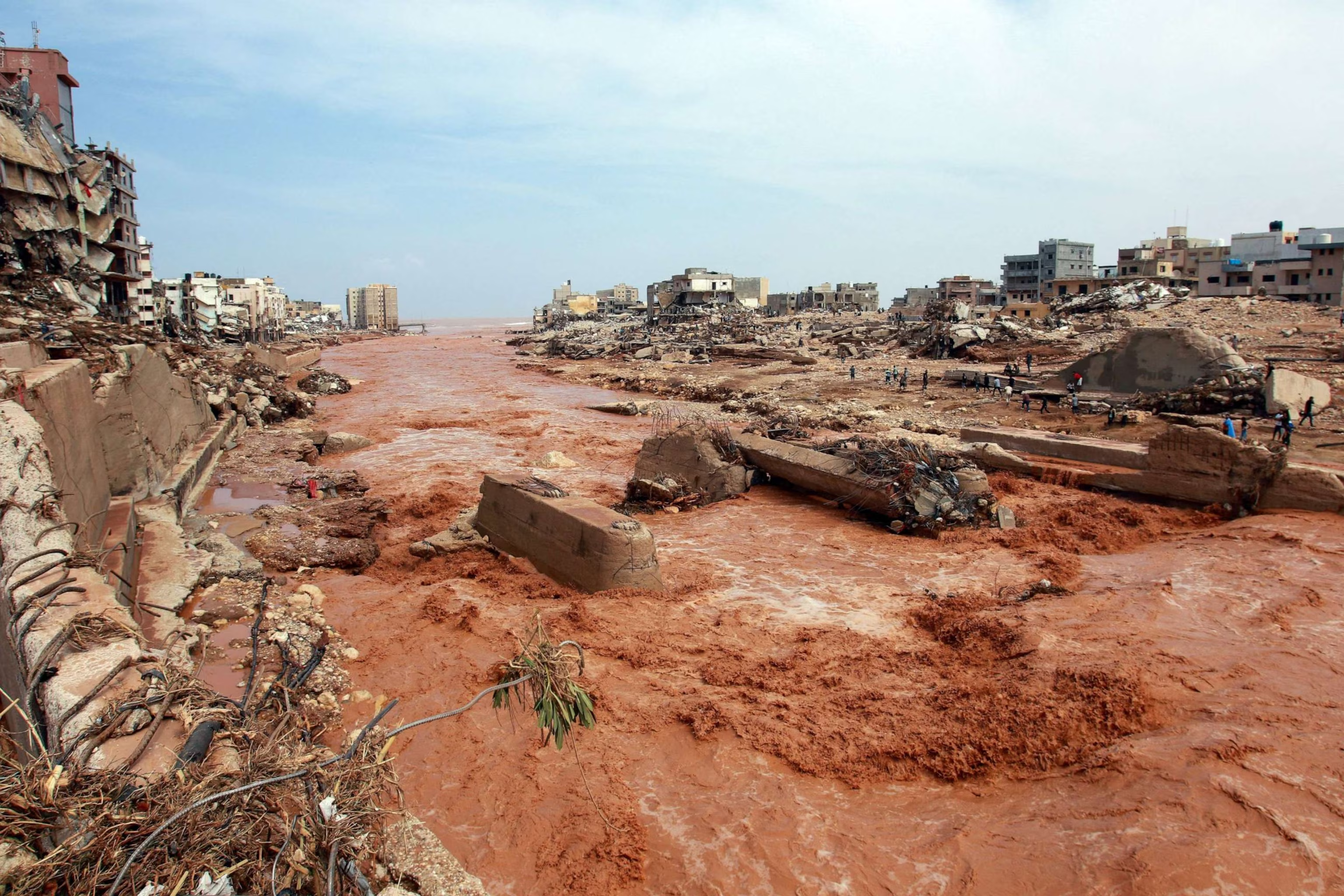Libya floods spread fear of uncovering unexploded bombs
The International Committee of the Red Cross has its teams currently assessing risks posed to the public in addition to relief and rescue teams, from unexploded bombs and munitions from Libya's civil war and undetonated World War II bombs and mines.
-

People look at the damage caused by floods in Derna, eastern Libya, on Sept. 11, 2023 (AFP)
As a result of Libya's catastrophic floods, aid workers may uncover unexploded bombs and mines from past conflicts to the surface which brings even more fear to a nation that has just lost over 11,000 people in the disaster.
The International Committee of the Red Cross (ICRC) stated that its teams are currently assessing risks posed to the public in addition to relief and rescue teams, from unexploded bombs and munitions from Libya's civil war and undetonated World War II bombs and mines.
In its statement, the ICRC said: "Our teams will be evaluating the risk posed by unexploded ordnance and abandoned munitions stores in Derna to prevent further death and injury", referring to the city which was the epicenter of the disaster and which has suffered the majority of deaths and injuries since Monday.
Hence, in Derna alone, the death toll has already exceeded 5,300 people.
#StormDaniel caused massive floods in the #Libyan city of #Derna. Here are some information about the port city.#Libya #HurricaneDaniel#تضامنا_مع_ليبيا#ليبيا#اعصار_ليبيا pic.twitter.com/K6Vg4spYTl
— Al Mayadeen English (@MayadeenEnglish) September 13, 2023
Resurfacing threats of war
Over a million objects such as explosive projectiles and small-arm ammunition have been removed in Libya since 2011, the time when NATO intervened with air support in an alliance with opposition forces who overthrew Libyan leader Muammar Gaddafi.
Read more: UN report suggests most Libya flood deaths could have been prevented
Following his exit, more proliferation of weapons and arms took place since rival militias were competing for control over the country. It is not only weapons from the civil war posing a threat but Libya is believed to have remnants left from World War II when it was a major location in the conflict.
With that being said, Derna was the location of a heavy bloody battle in 1941 - which would explain the arising fears.
The UN estimated last year that unexploded remnants in the country in Libya were scattered across an area of over 15 million square meters, and it added that 19 people, including 14 children, were killed in the year 2022 as a result.
Furthermore, earlier this year, the UN warned that "The indiscriminate use of weapons in civilian areas during the recent conflicts means even urban areas are littered with explosive remnants of war".
Meanwhile, Human Rights Watch discovered that at least 130 people in Libya were killed between the years 2020 and 2022 from unexploded remnants.

 3 Min Read
3 Min Read








